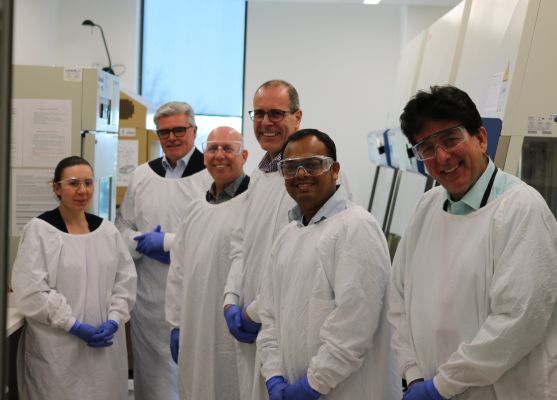Novel Solutions for Biofilm Infections
In early August the first annual review meeting was conducted for the Novel Solutions for the Biofilm Infections research project. This is a collaborative research project between the University of Sydney, Whiteley Corporation and the Innovative Manufacturing Cooperative Research Centre (IMCRC), with an investment of over $4m over four years.
“This work will be of major medical significance worldwide” said Dr Greg Whiteley. “Bacterial biofilms cause both human disease and death, and these microbes are also responsible for contamination in industrial and institutional settings,” he said.
Since the project commenced in mid-2018 great progress has been made in both research and model development.
“A paper entitled “Conditions under which glutathione disrupts the biofilms and improves antibiotic efficacy of both ESKAPE and non-ESKAPE species” was recently published in the high impact journal Frontiers in Microbiology” said Dr. Jim Manos of the University of Sydney.
“The paper shows that the antioxidant glutathione (GSH) not only disrupts biofilm in a wide range of bacterial species, including Pseudomonas aeruginosa, but also enhances the effectiveness of antibiotics against these bacteria” continued Dr Manos.
A second area where much progress has been made is in the development of a range of models to better represent the various areas in which biofilms effect the human body. The project is on track to deliver its key milestones and inform the manufacturing processes and technologies required to commercialise and received a green light from IMCRC.
David Chuter, CEO and Managing Director of the IMCRC, commented on the research progress and positive impact of industry and research organisations working together. “It is particularly rewarding to see a project that is on track to deliver novel solutions which promise an optimistic future for controlling and removing biofilms formation in different industry applications and thus reduce the risk of infections.
“The end goal of this project is to bring products to market which effectively disrupt the formation of biofilm and eradicate underlying bacteria in range of infections” said Dr Whiteley.

